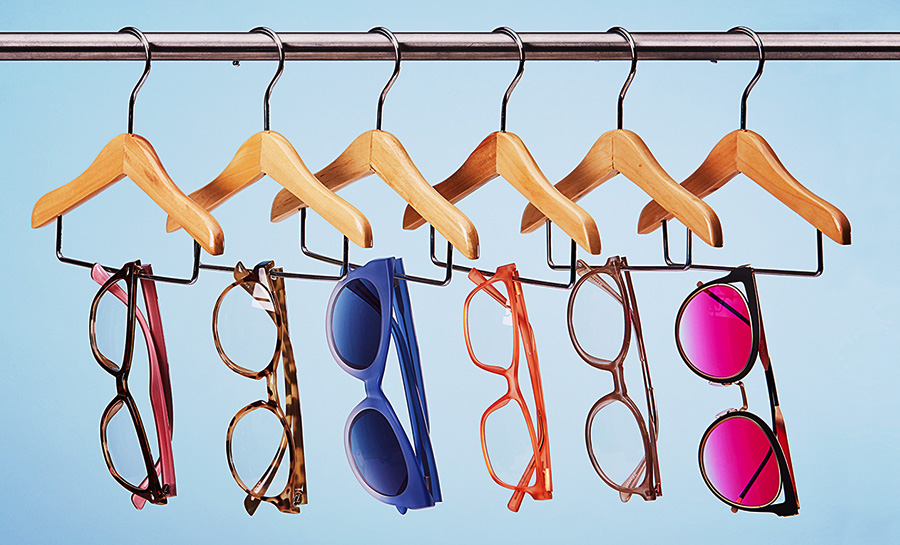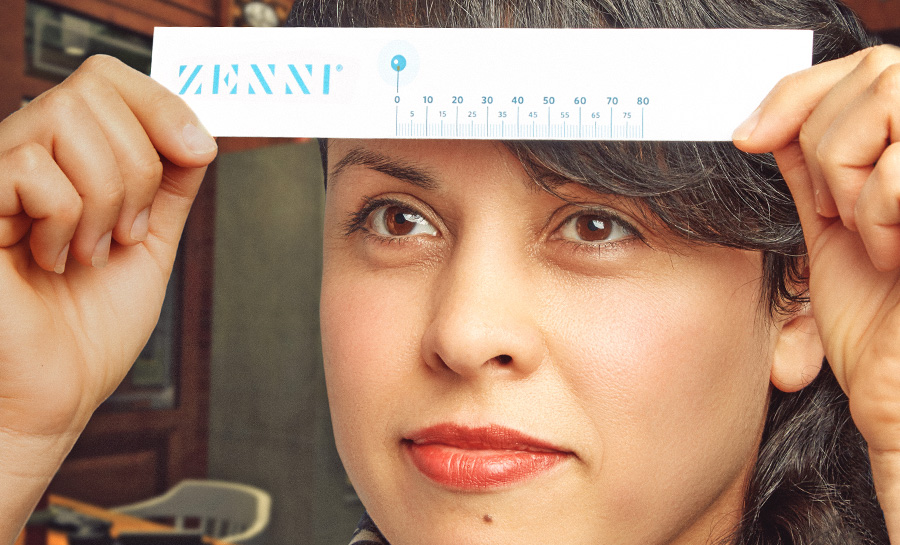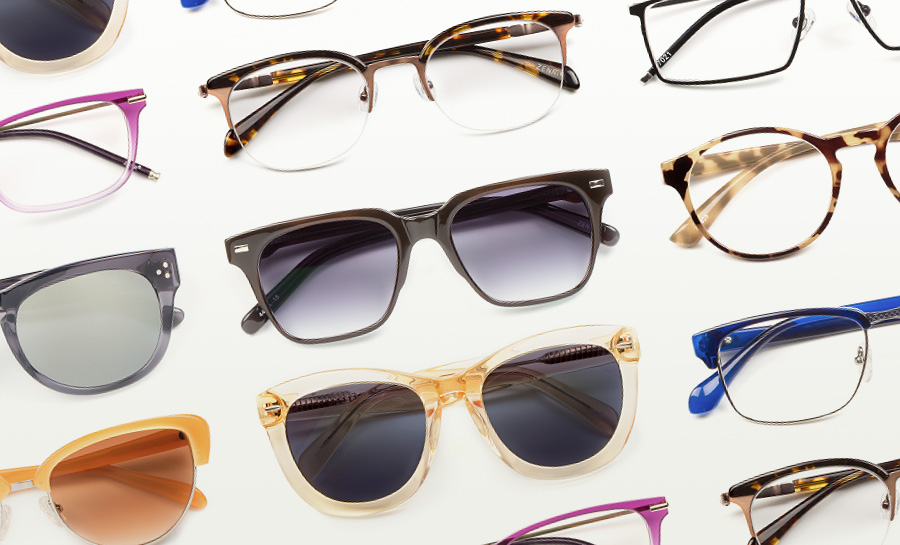Tips for Adjusting to New Glasses

For the fashionable frame wearer, multiple glasses personalities are a must. We at Zenni love seeing our fans post their collections on social media. In addition to the blue box and fabulous new frames in the mail, must come the knowledge that there will be an adjustment period to your new glasses. Think of this adjustment period like a new pair of jeans or shoes, it takes a while to get used to the fit. Below is a quick new glasses adjustment “How To.”
Adapting to a New Prescription
Expect a little bit of time for your eyes to adjust to a new prescription. If you are feeling mildly off-balance or dizzy when you first wear your new prescription, don’t panic it’s normal and pretty much everyone goes through it. We recommend not to plan long-distance driving or strenuous activity during your first few days with your new prescription. Instead make low key fun plans where you can show off your new frames to friends and family.
Showing off glasses to friends is perfect, because wearing your new frames as often as possible will speed up your eyes prescription adjustment. Although, your old glasses might be super fun, try not to wear them if they still have your previous prescription, it will only make adjusting more difficult. A full adjustment process can take up to a few weeks. If after one week of constant wear of your new glasses still don’t feel right and you are experiencing headaches or blurred vision, talk to your eye doctor.

Adapting to the Same Prescription in a New Frame
So, you just bought a new pair of glasses, same prescription as before and they just don’t feel “right.” Don’t’ worry, a different frame shape can even need some adjusting to get used to, usually just a couple of days. If after a few days your new frames still are not feeling right, follow our guide on adjusting glasses. For loose feeling, tightness or any uneven feelings, plan a visit to an optician for a professional adjustment.
Once adjusted and a little time those new frames should be feeling like old friends in no time.
Adapting to a New Lens Type
You just found out you need to start wearing progressive lenses to help with seeing multiple distances. Not a problem, we make those in several great shapes and styles. Now you can get the look and can see objects at any depth, a win-win in our book. With progressive lenses the clearest vision is near the middle of the lens, top-to-bottom, with soft focus at the edges, due to these lenses our wearers notice a longer adjustment period. We suggest for the first few weeks to turn your head instead of simply moving your eyes left and right. To see close-up objects, look through the bottom of the lens and tilt your chin up or down. This may seem silly and a little robotic feeling, but just remember, it’s only temporary.
On the other hand, if you are ordering single-vision reading glasses for the first time, remember these glasses are for a certain reading distance. For best results keep books, screens, and other objects at the right distance by measuring this distance in your most common and comfortable reading position before ordering the glasses.

Adapting to Different Lens and Frame Shapes and Sizes
We love fun frame sizes, big and round to small and rectangular, we love them all, but frame size and curvature can also take some adjusting time. In cases of lens curvature your peripheral vision is affected, and you may be seeing clearer than you were before. Regardless, your brain will need a couple of days to process your full field of vision with the enhanced clarity the corrected curve lenses provides.
Certain frames will enter your field of vision differently – smaller frames are usually visible, while large frames can hover on the borders of your view. If your new frame causes issues after a few days it is likely a problem with the lens, not the frame – if you’ve already adjusted the frame to fit correctly consult your eyecare professional.
Adapting to New Lens Material
You may also need time to adapt to lens materials that may differ from your standard clear lenses. New lenses such as polarized, photochromic, or blue blocker lens technology could take just a hint of time to get used to. Polarized lenses will enhance contrast and reduce glare but can also distort your view of digital screens. With photochromic lenses you might notice less discomfort with outside light, especially if you add reflective. The adjustment period will be minimal, but you may find yourself surprised the first couple of times your lenses automatically darken. The adjustment to blue blocker glasses could be more of a positive adjustment with your eyes feeling less tired and dry when you start wearing.
How is your adjustment to your new Zennis going? Let us know in the comments below!


 United States
United States